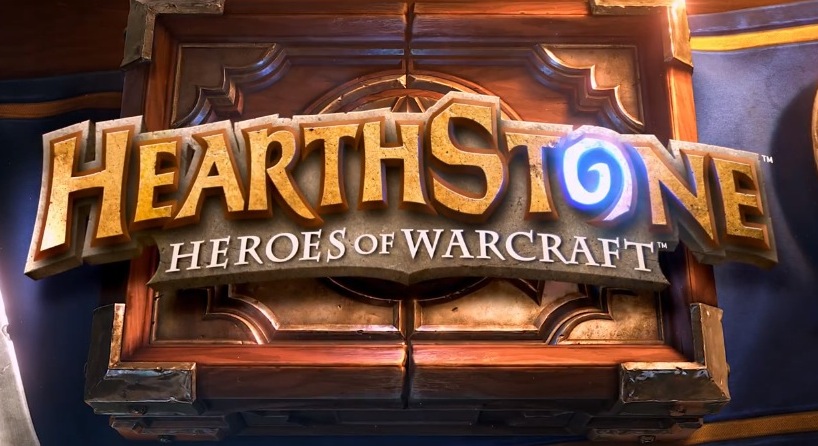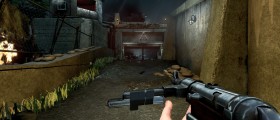If you read my previous inaugural piece about Blizzard opening Hearthstone to the general public, at least in beta form, you’ll no doubt have picked up on my excitement. As such you can imagine my reaction when roughly 3 minutes after the article published the beta opened for me and I finally got to jump into the card battling game for myself.
I wasn’t disappointed.
Opening with a fairly short series of practice bouts that explain the games systems in an intuitive and surprisingly charming way was an important first step to the game. During these tutorial fights you have to use the Mage class, which although it means nothing at the games outset is a pretty fair opener once you’ve battled the other 8 classes. I know that once the tutorial was done and I’d won all but one battle, my one loss being due to carelessness I won’t soon forget, I instantly went to the practice mode to play more full battles against each of the 8 classes to assess each one’s strengths and weaknesses and choose one or two who were for me.
Ultimately the Mage was one of these classes as she seems to me at least to be a middle of the road class without particular weaknesses or strengths and an ability that’s mildly useful in any situation. This is countered by some of the other classes who’s abilities are more useful in a very particular situation or when paired with a particular card set or style of play. Some classes are based entirely in shock and awe damage dealing, others are annoyingly defensive and some are healers. Each class’s ability is instantly recognisable after a while and their cards are easy to learn in terms of threat and usability.
Speaking of cards and deck building, this isn’t something I’ve gotten into quite yet purely out of inexperience. Despite having played quite a few practice games with my Mage class and a few with others to get a feel for them I’m still not sure what exactly my playstyle will be. Each time I log in to the game there are new challenges awaiting that award in game currency that can be used to buy a card pack full of random cards that can be class specific or for the use of any character, this currency can also be gained from winning pvp battles and likely through the use of the arena mode I haven’t touched yet. The cards are laid out in a fairly easy to grasp way based on class which make character comparison easier once you have a grasp of each character’s innate ability, which should make my inevitable foray into deck building easier for a card battling game virgin such as myself.
While I’ve talked about bits and pieces of the games that I’ve picked up from my play time what I haven’t explained is how exactly the game works. Basically a coin is flipped so one character goes first, this character starts with 3 cards while the enemy starts with 4 plus a bonus card which grants a temporary 1 bonus mana which lasts one turn. Mana crystals are what allows you to use cards, you begin with one and get one more each turn to a maximum of 10. These crystals fully refill each turn.
Obviously this slow increase in mana means that stronger cards take a long time to play and as such a deck of lower cost cards can be more beneficial than one full of seemingly stronger ones. Each class has certain specific cards that play to its strengths, for instance the Priest is all about healing. As such some of his minions gain bonus attack when they’re healed, each minion having an attack and health stat. The opponent can be attacked by any of your minions who’re free to act that turn and their attack stat subtracts from the enemy champion’s 30 base health. Similarly if your minion attacks an enemy minion the attack stat of your minion subtracts from the enemies health stat and vice versa. As such if your minion has a high attack but low health then even a low mana minion could take them out. You win when your enemy champion’s health is wiped out and lose if your own health is depleted.
Minions can have special abilities such as Taunt, meaning this minion has to be attacked before any other minion or the enemy champion or Rush which means they can attack on the turn they’re summoned. The terms the game uses are fairly basic and easy to grasp, pretty quickly you’ll be using all of the games lexicon.
I hope this all makes sense because it didn’t take too long to adapt to the games battle system and the tutorial likely does a much better job of explaining the rules than I ever could. What I can tell you about though is the charm that surrounds these systems. For instance the battle area you play cards on is strangely interactive and shows a level of attention to detail that is unnecessary but appreciated. If you start to play try clicking on the towers, fields, bushes or any other number of decorations that surround you or your opponent’s champion and see what happens.
While I’m not quite as far into the game as I’d have liked to be at this point I find myself playing a quick game or two anytime I have a chance. The games can be pretty quick and a good win is a great feeling, a loss can often be understandable and not as angering as I’ve experienced in some games, I’m looking at you League of Legends.
Tune in next time for the inevitable anger when I start really playing the PVP and lose continuously!




